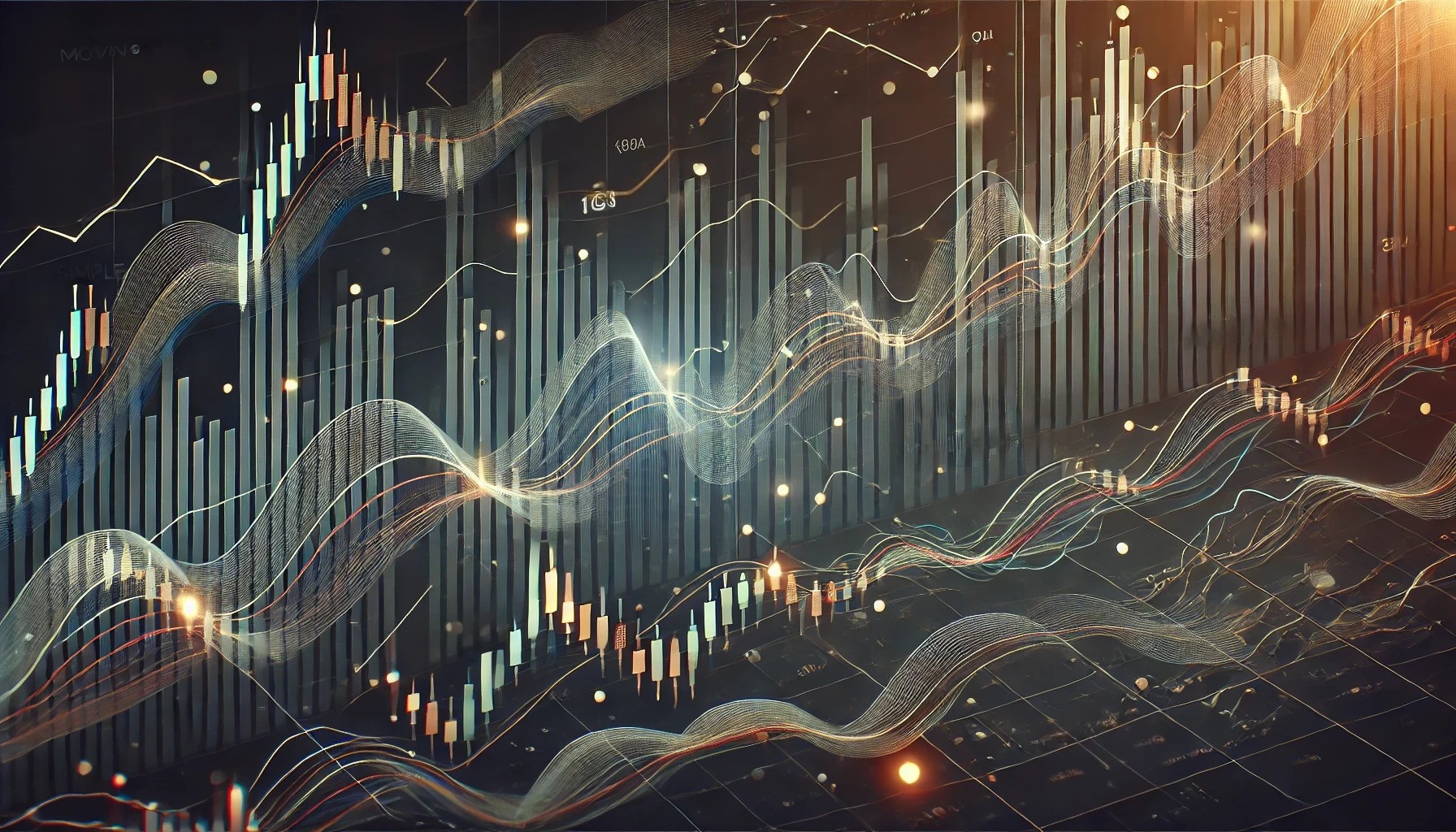How to Use Moving Averages in Crypto Trading: A Data-Driven Guide

Introduction: Why Moving Averages Matter in Crypto Trading
Moving Averages (MAs) are among the most widely used technical indicators in trading. They help traders smooth out price fluctuations, identify trends, and make informed decisions. However, many traders misinterpret MAs, leading to poor entry and exit strategies.
📉 Did you know?
Despite its popularity, many traders fail to use moving averages effectively, leading to false signals and incorrect market predictions.
💡 So how can AI improve Moving Average analysis?
This article explores:
✅ Different types of moving averages and how they work
✅ AI-powered insights to enhance moving average strategies
✅ Backtesting moving average indicators using AI tools
🔹 Types of Moving Averages Explained

1. Simple Moving Average (SMA)
- How it works: The SMA calculates the average price over a given period (e.g., 50-day, 200-day).
- Best for: Identifying long-term trends.
- Weakness: Reacts slowly to price changes, making it less useful in volatile markets.
2. Exponential Moving Average (EMA)
- How it works: EMA gives more weight to recent prices, making it more responsive to price movements.
- Best for: Short-term traders who need quicker signals.
- Weakness: More prone to false breakouts in choppy markets.
3. Weighted Moving Average (WMA)
- How it works: Similar to EMA but applies a linear weight to prices, giving more importance to the latest data.
- Best for: Swing traders who want balanced sensitivity between SMA and EMA.
4. Adaptive Moving Average (AMA)
- How it works: Adjusts the smoothing factor based on market volatility.
- Best for: AI-powered trading systems that need adaptive trend detection.
📌 Which one should you use?
Most traders use a combination of SMA (long-term) and EMA (short-term) to find stronger trade signals.
🔍 How AI Can Improve Moving Average Strategies
🚀 AI-powered tools eliminate human biases and improve the effectiveness of Moving Averages in trading.
🔹 1. Identifying False Breakouts
- Many traders enter trades based on Moving Average Crossovers (e.g., 50 EMA crossing above 200 SMA = bullish).
- Problem? Many of these signals are false breakouts, leading to premature entries and losses.
- AI Solution: Pattern recognition algorithms can filter out low-probability signals, reducing false entries.
🔹 2. Detecting Trend Strength More Accurately
- AI-powered sentiment analysis can combine on-chain data, social media activity, and price movements to confirm moving average signals.
- Example: If Bitcoin’s 50-day EMA is trending upward, but AI detects increased negative sentiment, it signals a potential reversal instead of a trend continuation.
🔹 3. Dynamic Moving Average Adjustments
- AI can adjust the time period of moving averages based on market conditions.
- Example: Instead of using a fixed 50-day EMA, AI can suggest using a 30-day EMA in high volatility or 80-day EMA in slower markets.
💡 Forvest’s AI-powered tools analyze market sentiment, trust scores, and volatility to provide better trading signals.
🔗 Check out Forvest’s AI-driven Trust Score Analysis here:
📌 Forvest.io/trust-score-analysis
📊 Backtesting Moving Average Strategies with AI
Backtesting is essential to verify whether a strategy is profitable in different market conditions.
1. AI-Driven Backtesting for Moving Averages
- Traditional backtesting only considers historical price movements.
- AI-powered backtesting includes multi-variable analysis such as:
✅ Market sentiment shifts
✅ Whale activity detection
✅ Liquidity zones & support levels
📉 Example: A backtest of SMA + RSI strategy using AI revealed that in high volatility, a 20-day EMA performed better than a 50-day EMA.
2. Forward Testing to Avoid Overfitting
- Many traders fail because they optimize strategies only for past data (overfitting).
- AI models forward-test moving averages in simulated live market conditions before real trading.
💡 Want to test your own strategy?
🔗 Use Forvest’s AI-powered market tools here:
📌 Forvest.io/trust-score-analysis
📌 Key Takeaways for Crypto Traders
✅ Moving averages are useful, but not perfect—combining them with AI improves accuracy.
✅ False breakouts are a major problem—AI helps filter out weak signals.
✅ Backtesting moving averages with AI gives a realistic view of past performance.
✅ Market sentiment & AI-driven insights can confirm whether an MA signal is reliable.
🚀 Final Thought:
Moving averages are great for identifying trends, but traders should combine them with AI-powered analysis, sentiment tracking, and risk management tools for better decision-making.
🔗 Explore AI-driven market insights with Forvest:
📌 Forvest.io/trust-score-analysis
Rating of this post
Rate
If you enjoyed this article, please rate it.
Moving Averages (MAs) are technical indicators that smooth out price data to identify trends. They help traders make better decisions by reducing market noise.
MAs help traders spot trends, define support/resistance levels, and create trading strategies based on crossovers and price interactions with moving averages.
The main types of MAs include: Simple Moving Average (SMA): Best for identifying long-term trends but reacts slowly to price changes. Exponential Moving Average (EMA): More responsive to price changes, making it suitable for short-term trading. Weighted Moving Average (WMA): Gives greater importance to recent data, balancing between SMA and EMA. Adaptive Moving Average (AMA): Adjusts dynamically based on market volatility, often used in AI-powered trading.
AI enhances MA strategies by: Filtering out false breakouts using pattern recognition. Detecting trend strength through market sentiment analysis. Dynamically adjusting MAs based on volatility for more accurate signals.
A crossover occurs when a short-term MA (e.g., 50 EMA) crosses a long-term MA (e.g., 200 SMA), signaling a potential trend change. AI reduces false signals by analyzing additional data like sentiment shifts and whale activity.
AI combines price movements with on-chain data, social media sentiment, and liquidity analysis to confirm if a trend is strong or weakening.
Backtesting involves testing a trading strategy on historical data to evaluate its effectiveness. AI-powered backtesting goes further by incorporating multiple factors like sentiment shifts, whale activity, and liquidity zones.
AI conducts forward testing, where a strategy is tested in simulated live markets to ensure it works in different conditions instead of just past data.
No. Most traders use a combination, such as SMA for long-term trends and EMA for short-term signals, to improve accuracy.
AI tools like Forvest’s Trust Score Analysis provide market sentiment, volatility insights, and smarter trading signals. Traders can use these tools to refine their MA strategies.
Rating of this post
Rate
If you enjoyed this article, please rate it.



